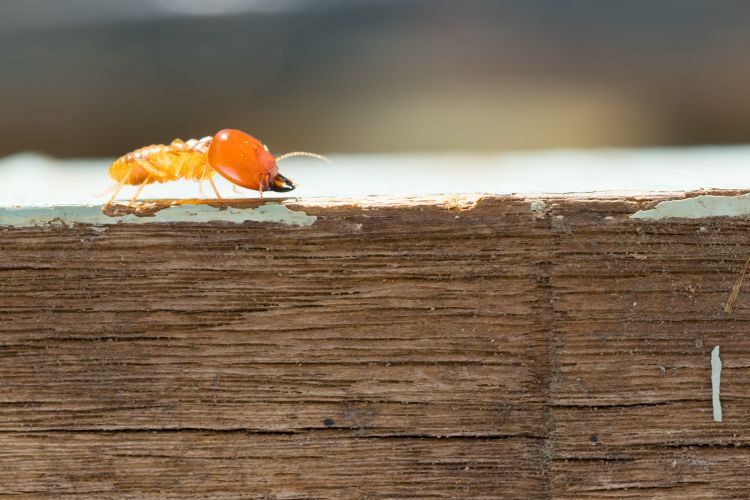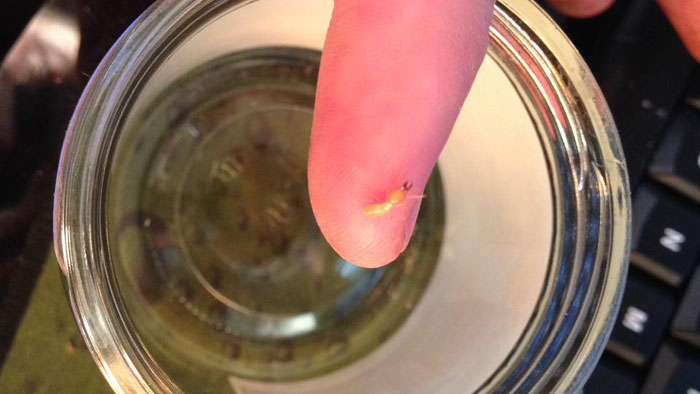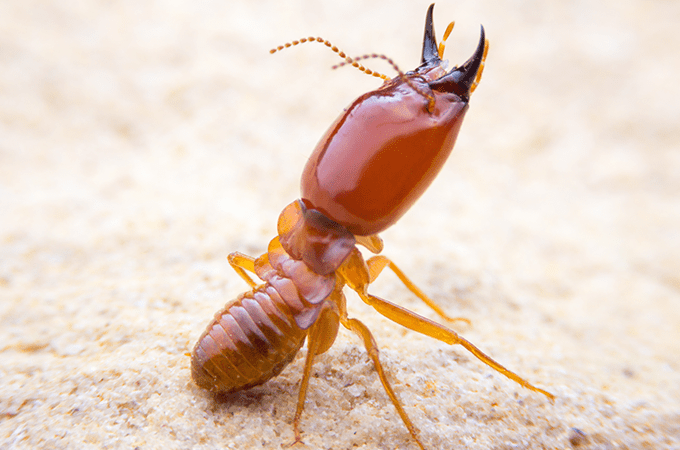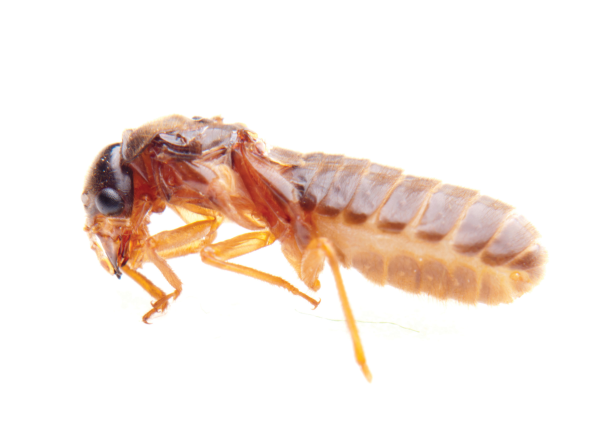Common areas of the home prone to termite attack
What we look for when undertaking a termite inspection
When pest controllers conduct a visual termite inspection are not only just looking for active termites within the property are also inspecting and reporting any areas that are conducive for termite attack which could bring termites into the areas and dramatically increase the risk of termites attacking your property there are a number of things are keeping an eye for here are some conducive conditions recently found during an visual termite inspection.
Hot water overflow & air conditioning units
This is the hot water overflow from systems like hot water systems, air conditioning units if these are not connected to drainage and are attached close to house and constantly dripping in to soil near the house or in sub-floor can attract termites to the area due to the excess moisture it created.
Form work
Timber form work is usually used by builders when constructing house or supporting concrete areas such as bathrooms but many times builders will forget to remove it and termites are attracted to this timber because it is in contact with the soil and in usually in moist areas the termites will use it to travel or bridge to other areas of your home
Soil Bridging
This is where soil is bridging areas or your home from either the slab edge or in this case the wall sheeting this gives termites a clear undetected entry point into your home with out you even noticing they are there until it is to late.
Solution
Remove soil away from the slab Edge or exterior wall sheeting so there is a clear inspection zone so termite can’t gain access undetected and will have to show themselves

Termite Prevention Tips for Residents
chances are you’ve had to deal with termites. Termites infest two million homes a year across the country, causing over $5 billion annually in repairs – but while they’re present across the nation
resident and you haven’t taken steps to protect your home against termites, you could be putting yourself at risk for thousands of dollars in repairs. For the sake of your wallet and your sanity, termite prevention is a must.
Termites are eusocial insects that form colonies that can contain thousands, often millions of individuals based on the species. The termite life cycle follows a caste system. After hatching from an egg as a nymph, each termite in the colony will develop over time into one of three distinct roles depending on the needs of the colony: workers, soldiers, and reproductives.
Workers are white, approximately one-eighth inch long in size, and wingless. Workers make up the vast majority of subterranean termite colonies, and are responsible for all the heavy lifting and day-to-day tasks that keep the colony thriving, like tunneling, building and repairing the nest, gathering food, tending to young, and feeding members of the other castes (as they cannot feed themselves). Consequently, worker termites are responsible for most of the damage that comes with a termite infestation.
Soldiers are beige-colored with large brown heads topped by a set of strong biting mandibles. Soldiers are much less common than workers, and as their name implies, they are responsible for defending the colony from other bugs or animals that try to attack it.
Reproductives are responsible for one thing: making more termites. They are black and grow to be about one-half inch in body size, though the female’s abdomen will expand to multiple times her size in order to maximize egg production. When they reach maturity, termite reproductives enter a winged (alate) form and form mating flights in which a male and female pair up and fly off to start a new colony. Once they find a suitable location, their wings fall off and the two mate for life, becoming the King and Queen of their new colonies. Once the colony has reached a certain size, the Queen gives birth to new reproductives and the cycle continues.
Subterranean Termites
Subterranean termites live and feed in soil and wet wood, generally living underground but occasionally coming to the surface for food. Tenacious eaters, subterranean termites are known to eat through cardboard, paper, wood, foam insulation boards, thin lead and copper sheeting, plaster, asphalt, and some plastics. Their appetites combined with their tunneling behavior make them extremely destructive to any wooden structures that come into contact with the ground – namely, your home’s foundations.
Drywood Termites
As their name implies, drywood termites primarily differ from subterranean termites in their feeding habits, preferin dry wood instead of moist or rotten. Drywood termite colonies are significantly smaller than their subterranean cousins, with populations typically around a few thousand compared to the millions found inside a typical subterranean colony. While this generally means that a drywood termite infestation isn’t as damaging as a subterranean infection, because they spend the entirety of their lives inside wood, a drywood termite infestation can be much more difficult to identify.

What to Expect From an Inspection and How to Prepare
Smart homeowners stay on top of termite control. A big part of termite control is keeping termites from invading your home, and the first step in accomplishing this is scheduling a termite inspection. So now that you’ve scheduled one, what can you expect? Are there steps you need to take to get ready for the inspection? Preparing your home for a termite inspection isn’t difficult, but there are a few things you can do to help make it go more smoothly.
DO A LITTLE BIT OF REARRANGING
Anything you have stored under your sinks in the kitchen and bathroom will need to be moved to another area so that the inspector can check your water sources for termite activity. Inside your garage, move anything you have stored against the wall to about two feet away from the wall. If any items are against the walls outside your home, they’ll also need to be moved two feet out.
MAKE IT EASY TO ACCESS THE ATTIC
Anything blocking the entrance to the attic should be cleared away in advance of the inspector’s visit. Not only does the inspector need to get into the attic, but you want to make sure no debris falling from the attic disrupts your things while he’s working.
CLEAR THE CRAWL SPACE
If your home is built on a raised foundation, making it easy for the inspector to get into the crawl space. Clear the opening, move any items that block the entrance, and make sure nothing stored in the crawl space will impede the inspector’s work.
WHAT HAPPENS DURING THE INSPECTION

signs of termite infestation
During your termite inspection, you can expect the inspector to spend about an hour and a half to two hours thoroughly going over your property. This time frame, of course, will vary depending on the size of your property. The inspector will look at the interior and exterior areas of your home, checking for visible signs of a termite infestation, which include: droppings, broken wings, mud tubes, and damaged wood.
Termite Warning
Tornadoes, earthquakes, fires…these disasters typically have warning signs that allow just enough time to save yourself. Termites cause more damage each year to homes than ALL of those natural disasters COMBINED. Did you know that?
Pest Solutions would like to give you this official termite warning this year. As it gets warmer outside, spring cleaning, landscaping, and house repairs will begin. While you’re digging around in your yard, there are some things you should be aware of. Termites are known as “silent destroyers” because they will feed on the structure of your house for quite a while before you even realize they’re there. Termites are smart. But YOU are smarter. Well, you will be once you read the signs of termite infestation
They’ll eat your house!
Termites can also quite literally eat homeowners out of house and home without them even knowing it until it’s too late. They have the ability to chew through wood, flooring and even wallpaper undetected, 24/7, and can compromise the structural stability of a home within several years depending on the species. And the kicker…your homeowner’s insurance policy most likely doesn’t cover pest infestations.
The Threat
If any of these signs are present, experts recommend you contact a pest professional to properly identify the problem and termite species, and effectively remove the colony. You wouldn’t ignore a tornado siren, would you? Well, we’ve gotten word from several sources, including the National Pest Management Association (NPMA) that termites are supposed to be particularly bad this year compared to last year.
The Solution
Which one of the following statements fits your situation?
I have termites.
I am currently termite-free but interested in NOT GETTING termites EVER.
I have no idea if I have termites right now or not.
You can realistically only claim that you’re termite-free if you’ve had an inspection by a legit professional within the last 90 days or if you currently have a treatment in place.

How to Keep Your Furniture Termite-free
There’s nothing more dangerous and ruinous than termites in wooden furniture. What makes it worse is that it is difficult to notice when the infestation creeps in.
There are two kinds of termites that can affect wooden furniture – subterranean and drywood. Subterranean termites live in soil as well as wood while drywood termites only attack wood
Identifying Termite Infestation
Look out for holes in the woodwork. Tap or push against it with a pointed object. If it falls readily, then it’s a sure sign of termites in wooden furniture.
Keep an eye out for sawdust, wood-colored termite droppings or wings around areas where chips or cracks appear on the furniture.
Mud tube formations on the walls of the house are a sign of subterranean termites.
Termites thrive in moist, dark conditions. Leave your wooden furniture in sunlight for 2-3 days continuously. Termites can’t stand heat and die off easily. This method also helps get rid of the moisture in the furniture, thus preventing further infestation.
Cardboard is made up of cellulose and a woody smell that termites can’t resist. Moisten it with water to make the smell more distinct and place it near the affected area. Within a few hours, the termites lure out to the open cardboard. Discard or burn it to get rid of termites in wooden furniture.